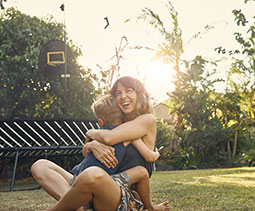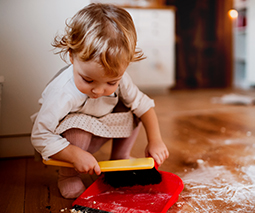6 tips you’ll need when it comes time to potty train your toddler

Nothing strikes fear in the heart of a parent quite like the words ‘toilet training.’ S**t happens. Literally. And like every other facet of parenting, it seems everyone has a differing opinion on how to do it right – but the transition from nappies to undies needn’t be a nightmare. In fact, there’s plenty you can do to ensure that potty training your little one is a smooth, successful and fuss-free affair.
1. Lay the groundwork early on
Through positive language and behaviour, you can start laying the groundwork for potty training early on in your child’s life. “Children learn to toilet the same way we and they learn everything else,” says Monica Ferrie of Toilet Training Educators, noting that allowing your child to watch and engage with you while you use the toilet are the all-important first steps. “We don’t need to make it a big deal or force them but if they want to engage, then it’s important to let them.”
Once you’re at the toilet training stage, Monica suggests changing your child’s nappy in the bathroom as this will help them become familiar with the process. “How well you familiarise your child with toileting and toilets and the no-pressure environment will make the training stage easier.”
2. Make sure they’re ready… but don’t leave it too late
“The evidence tells us that toilet training commenced between 18-24 months is more likely to be successful and be easier for parents,” says Monica, who notes that we’re more likely to be met with resistance from children aged three and older due to further developmental milestones, such as independence. However, thanks largely to the advancement of comfort in disposable nappies, children are spending a year longer in nappies than they did 30 years ago.
Read more on toilet training:
- I never bothered training my kids to go to the toilet
- 13 signs your toddler is ready to start potty training
- The method that teaches babies to go to the toilet on cue
If your child needs an incentive to ditch the warm and dry diapers, Monica suggests placing a piece of tissue paper in the bottom of the nappy so that they “connect wee with wetness and discomfort. It’s hard for them to understand why it’s important to use the toilet if there is no consequence for weeing in your nappy.”
According to Monica, common physical and behavioural indicators that your child is ready to start toilet training include:
- They are able to stay dry for 1-2 hours
- They are able to do soft formed bowel actions
- They are able to sit still for a few minutes
- They are able to pull their pants down
- They are curious about the toileting process
- They become uncomfortable with poo in their nappy
- They ask for their nappy to be changed
3. Avoid any added pressure
Step away from the fancy new undies and hold off on the educational books, people. “Avoid anything that builds expectation and pressure – like presents and special undies, talking about it, reading about it …” says Monica. Instead, quietly “expect they will be successful and treat it very low key,” says Monica. Ditto incentives. “Incentives create pressure,” says Monica. “Don’t make using the toilet a big deal at all. No incentives and no special undies!”
4. Time it right
Is your child about to become a big brother or sister? Are you about to move house? If there’s any upheaval on the horizon of your little one’s life, Monica warns that now isn’t the time for toilet talk. “When a child has too many other things to think about – like a new house or brother or sister, or childcare or when they’re not well, it’s harder for them to be able to devote conscious brain space to receive and act on a message that they need to wee or poo,” says Monica.
5. Accidents happen – and that’s OK
Accidents are normal – learning by mistakes is an important part of all skill development, says Monica, who recommends reacting to accidents in a low-key manner. However, as most children wee every 1.5-2 hours, taking them to the toilet for ‘a try’ every couple of hours can cut down on the number of accidents our child has (“Don’t ask a two or three-year-old if they need to go – the answer is always no!”).
“Try at the same time each day – a few hours in the morning can work well as children are less tired,” says Monica. “If there have been a few accidents by lunchtime, put the nappy back on for the afternoon and try again tomorrow. Always begin in familiar environments and don’t even think about training when you’re out until your child has the skill sorted at home or other familiar places.”
6. You don’t have to go cold turkey
“There is no evidence to support the myth that once you take the nappy off you can never put one back on,” says Monica, who points out that we don’t apply this radical sink or swim approach to any other areas of our child’s learning. If you feel like you’ve tried everything and are struggling to make any progress, give yourself permission to take a break. “If everyone is sick and tired of the whole thing, stop for a couple of weeks and try again then,” Monica concludes. “Sometimes this makes a huge difference as well as giving everyone a break.”









